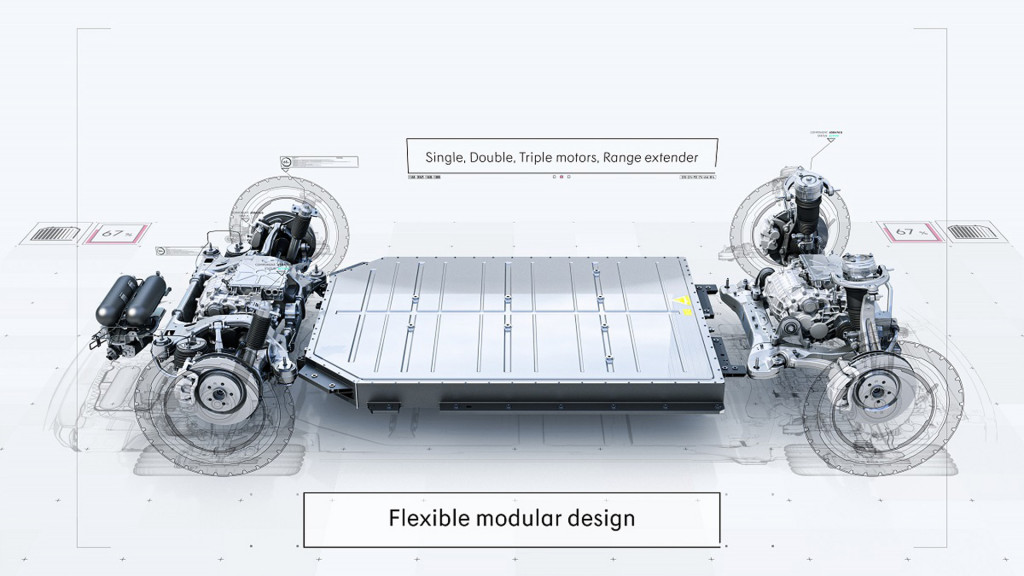The first five mods to break out your credit card for? This time we realise that it’s what’s on the inside that counts… Here’s our first five interior mods you should get your hands on.

Gear Knobs, from £15
So, the number one of our first five interior mods. What will be the king of them all? Surely it has to be the humble gear knob, right? I mean, think about it, is a car really modified without an aftermarket, or at least uprated, shifter? And that’s another thing, back in the day it was an FC rule that we would only call them shifters, because we used to giggle like little girls when writing the word knob. We’ve obviously grown up a bit now though… not!
Anyway, knobs come in all shapes and sizes. Some people like a big one, some like a fat one, and some want nothing more than them to be a bit of a showpiece. But, the only really important thing lads, is how they fit in your hand, that’s the key to the best performance.
Shifting effectively is a timing and coordination game and, believe it or not, getting the right knob can make a huge difference to how you drive. It’s not just about looks, or the flashy brand (although both can have a lot to do with what you choose), many tuners still use weighted items to help assist with the throw and get a more positive change. So, the weight helps, but always bear in mind that the most valuable knob from a performance point of view is one that simply feels right.
The only thing to watch out for here is fitments. You really do get what you pay for, so always look for a good quality item that lists your specific model as an application. You don’t want it coming off in your hand at an inconvenient moment now, do you? Most good knobs will simply screw onto the thread left on the standard gearstick, or be tailored for your car if it has a ‘lift up reverse’ or other awkward fitment. In other words, one car may be different to the next, and there’s no such thing as a truly universal gear knob. Generally speaking, the items that claim to be universal are universally guaranteed to fit fuc… (you get the picture)
Top Contact: Kode – kodeshop.co.uk

Aftermarket Steering Wheels, from £90
There’s two key things that you need to know about aftermarket steering wheels. First, the right choice will always look the bollocks, and show the world that you’ve gone to all the effort of finishing off your interior, not to mention removed your airbag, all in the pursuit of modifying glory. And second… er yeah, in 99.99% of cases, they won’t have an airbag. This isn’t a safety issue as such; we all know that you wear your seatbelt and aren’t going to crash your pride and joy anytime soon. It’s more that, if your airbag light on the dash is illuminated for all to see, you’ll not only fail your MOT, but all the other airbags in the car won’t work either.
So, when fitting a new steering wheel it’s vital to trick the car into thinking that the airbag is still fitted, and for this you’ll need the correct resistor or an ‘airbag delete kit’. These aren’t universal, you’ll have to match up with the correct resistance for your particular car. This will keep the light out, ensure all your other airbags function, and make sure you’re the right side of the law.
Speaking of universal parts, too. The thing to remember here is that most aftermarket wheels are designed to be just that, to actually fit one to your car properly, you’ll also need a ‘boss’ which is an adaptor tailored to your specific model. Don’t get caught out with the wrong PCD either – that’s right, steering wheels have PCDs, too. This is the measurement of the bolts that fit your wheel to the boss, and it’s crucial to make sure the wheel you choose, matches the PCD of the boss.
The two most popular steering wheel PCDs you find here in the UK are 6x70mm, commonly known as ‘MOMO’ fitment (also fits Sparco, Isotta, Kode and NRG). And 6x74mm, known as Nardi (also fits Personal). They’re easy to mix up, so always double check to avoid getting a wonky wheel, or one that doesn’t fit at all.
With all that, there is some good news though, it’s scientifically proven that a good steering wheel can be a genuine performance enhancing mod. If it feels better, you’re more comfortable, you’ll often get more feedback and that means you’ll be a better driver. Makes sense to us.
Top Contact: MOMO – www.momo.com

Seats (or not), From £Nowt
You need one of these to park your booty when you drive your car, that’s a given. But, do you really need all the others? Have you got kids? Do you need to take Uncle Bob and Auntie Mildred shopping all that often? If not, why not rip out the rest and save some weight? It’s free you know. Actually, it’ll do wonders for handling and your MPG, so technically you’ll be richer. A penny saved is a penny earned!
In any case, that’s the first consideration – weight. There are many options when it comes to modifying the seats you actually need; you could retrim the originals in leather or get custom designed covers from Seatskinz for maximum poshness, or fit standard seats from a better model. But, chances are standard perches will be heavy, so for many, switching to aftermarket items is all about shedding poundage. In some cases, you could save up to 20kg per seat because many aftermarket items are specifically designed to be light, and manufactured using fibreglass, carbon fibre or even Kevlar.
There’s two main flavours – bucket seats, which have fixed backs and are derived from the racing world. And recliners, which are a little more forgiving in road cars. That’s an important point, too. Bucket seats are great on the track, because they’re generally designed to hold you in tight when you’re balls-out in the corners. For some they may well work on the road, too, but it doesn’t mean that everyone will find them comfortable.
Recliners on the other hand tend to be more supportive than standard, but less supportive than buckets… and a hell of a lot more respectful to your backside which may have to sit in them for hours on end. All we can say here is choose wisely and get yourself parked in a few different models before you commit.
When it comes to fitment, in some respects aftermarket seats are not unlike aftermarket steering wheels. Again, they’re universal items that need a tailored adaptor (in this case a subframe) to fit your car. And, with the many modern cars that have airbags in the stock seats, once again you’ll need a resistor or a delete kit to stop the dreaded airbag light coming on.
When you’ve considered all this there’s one last thing to think about – nothing will ever transform your interior quite like a set of seats. For most of us, that’s all that really matters.
Top Contact:
Seatskinz – www.individualautodesign.co.uk
Cobra Seats – www.cobraseats.com

Gauges, From £30
What’s even more expensive than a posh set of seats? Normally the big, hot thing under the bonnet that makes funny noises and burns all your petrol. With this in mind it makes sense that you’re going to want to keep an eye of all the technical stuff like oil temperature, air-fuel ratios and boost… wonderful, lovely, juicy boost. And that’s where gauges come in.
On the bright side, nothing says your car means business like having more dials than a 1980s Boeing 747, and you can get them for just about everything from battery voltage to exhaust gas temperature. To be honest, even if you haven’t got a clue what any of them mean, or how to fix a problem they flag up, it certainly looks like you do, and for some that’s kudos aplenty.
Aftermarket gauges have been around for decades now and, traditionally at least, you’d see plenty of tuner cars with stacks of round instruments slotted somewhere in the dash, or the A pillar, or the hole where the headunit used to be, and sometimes even outside the car on the bonnet. This still happens, and it still looks cool in a retro kind of way, but let’s not forget that the game has moved on somewhat, and not everyone fancies taking a 52mm hole saw to their modern motor. Or having to drill and tap sensors into oil lines, coolant systems and all the other things necessary for these gauges to take a reading.
Thankfully nowadays there are plenty of other solutions available in the form of ‘multi-gauges’, these can range from relatively discrete items mounted in heater vents and the like, to rather lairy touchscreens that look like widescreen TVs… just in case the bloke behind was wondering what sort of airflow your MAF is seeing at any given moment. What all these modern gauges have in common though, is that they can show many different parameters on an LCD screen, without the need for a whole load of separate units dotted about. Plenty of the most up-to-date items also use a single feed, plugging into your OBD2 port and taking all the info from there. After all, most cars since the late ‘90s are packed with stock sensors all over the engine and other ancillary systems, it’d be a shame to just leave them for diagnostics, eh?
Top Contact: Demon Tweeks – www.demon-tweeks.com.

Tailored Car Mats, from £50
So, you’ve got 30-quid left in your pay packet and got your eye on a set of universal car mats? Do yourself a favour, stuff the cash under your mattress and wait until next month. You’ll thank us when you buy a set of proper tailored jobs that don’t get stuck under your brake pedal… and so will the tree that you’ll inevitably hit!
Tailored car mats are just that, they’re designed and cut specifically to match the floorplan of your car. You wouldn’t try installing the carpet out of your mum’s 3-bed semi in your footwells, would you? And it amounts to the same thing. Buy some that fit, trust us, there are plenty out there, in all different designs, with all grades of carpet and stitching, in any colour you can think of, and with plenty of trick Gucci options like kickplates and embroidered logos. Nowadays there’s even uber posh mats that cover the whole floor, up the sides, and all over the shop.
The truth is that you can spend a fair amount, or a lot, on decent mats, but make no mistake, the one most important thing is that they fit properly without sliding around. Most of the good ones will use the factory restraints on the driver’s mat to stop them interfering with the pedals, but at the very least, get yours stuck down with a bit of double-sided tape or Velcro to avoid any nasty, bum clenching moments.
Top Contact: Carmats4u – www.carmats4u.co.uk







